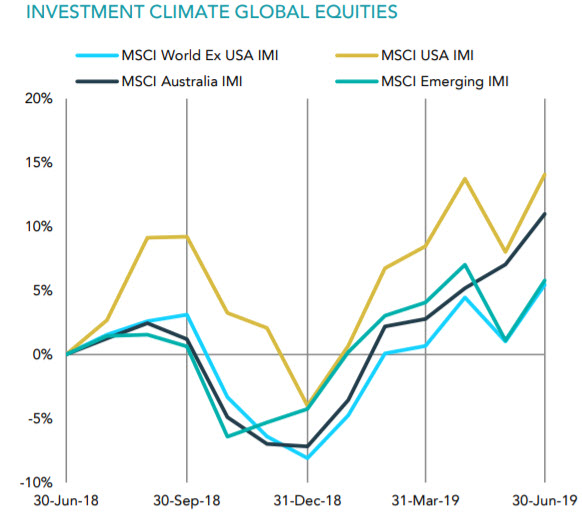Should I buy Gold as an investment?
Every now and then I get asked about gold as an investment. My view is that it is a speculative investment whose price is often driven up by fear and down by strong markets. You will have noticed some fear around recently I’m sure, and this has driven up the gold price to its current level of US$1,700 per ounce.
You may also be aware that the Australian dollar is currently very weak against the US dollar. So, if you are an investor in Australia and you hold gold, you have the added benefit of the currency rate further boosting your increase in investment value.So, if you bought gold in Australian dollars about a year ago you’d be pretty happy right now.
However, long term wealth creation requires your investments to perform well for decades at a time. When we build portfolios we adhere to a firm set of beliefs about long term market characteristics of a range of asset classes. Each asset class contributes something to the portfolio. Normally ‘growth’ or ‘stability’. We accept that risk and return are inextricably tied, so we balance the requirements of the client to build a portfolio that will perform at the highest level possible having regard to the volatility the client situation can withstand. Where possible, we take only the risk required to achieve the goal. Most of the assets we invest in also produce income in the form of dividends, rent or coupon payments. These inflows can be an income source for the client or be reinvested to compound our gains in the long run.
So, what is Gold’s role in all this? Is it a good growth asset?
Whilst, like any share or property, gold has periods where it’s performance well and truly beats the broader market, in the long run gold has performed poorly compared to other growth assets.
A long run chart below shows gold v global shares (growth assets) and Treasury Notes (defensive assets) over a 40-year period. As you can see, gold has not performed well compared to other growth assets.
So, perhaps gold is a defensive asset?
The only purpose for defensive assets is stability and liquidity. But gold has proven to be significantly more volatile than defensive assets such as Treasury Notes over a 30-year period with only a slight improvement in performance. It just doesn’t do what we need defensive assets to do. Couple the fluctuations in price with fluctuations in exchange rate and gold is much too volatile to hold as a defensive asset in the long run.
The graph below shows gold values in US and AUS dollars. As you can see, the exchange rate has a significant effect on the increases and decreases in value over time.
There’s another thing about gold. It doesn’t really do anything. It doesn’t produce anything, it doesn’t feed anyone, or cure anyone, it doesn’t pay an income in the form of a dividend or rent. Just under 80% of gold mined gets turned into jewellery. There is no question that is a growth area, with the significant majority heading to India and China. Nearly 20% ends up as bullion and only about 3% of gold goes into any form of technology, engineering or medicine etc. The only way gold as an investment will ever work for you is to buy it (at the right time), wait for it to go up and then sell it (at the right time), pay your transaction costs, pay your capital gains tax and then start looking for the next investment idea.
Summary
If you like the idea of owning a small amount of gold for a certain period of time as a speculative endeavour that’s great. If you got in three years ago and got out last week then you’ve done really well. But as a large component of a long-term investment portfolio we believe there are other, less speculative assets that will serve you better in the long run.











